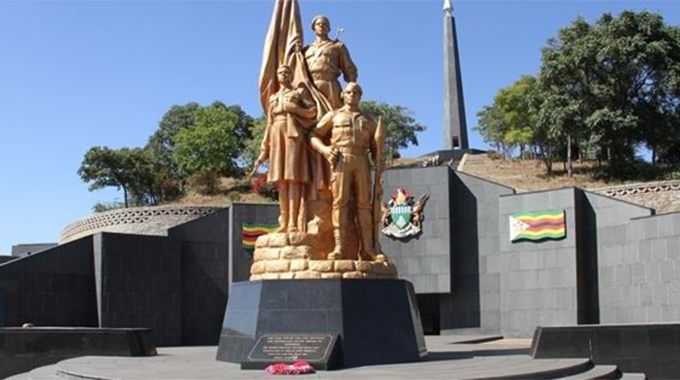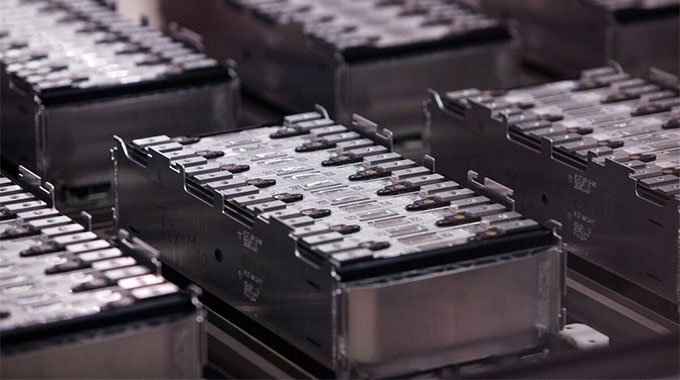Of Heritage corridor and Africa Day celebrations

Francis Mpazviriwo Correspondent
Warren Park has asserted its position as Harare’s prime heritage corridor.
This assertion is made, mindful of the rich cultural and historical significance of the country’s two oldest suburbs of Mbare and Highfield.
Who can forget the gusto at the independence celebrations in 1980, as Bob Marley was “mashing it up” in Zimbabwe at Rufaro Stadium as his dreadlocks hysterically swung in the air, or Highfield’s critical role in events which shaped Zimbabwe’s course of history!
I did not witness any of these events, having come to this world some 11 years later although these have been central to Zimbabwe’s gestation until its birth hood!
But I digress!
Warren Park has however, carved its unique story, as a heritage corridor.
A stone’s throw away from Warren Park, lies Belvedere, home to the National Sports Stadium (NSS).
The giant arena has a rich history, which transcends its primary purpose as a sporting theatre, having hosted national events and countless crusades over the years, reminding us about man’s endless quest for salvation.
Samora Machel
As you drive along the symbolically named Samora Machel Avenue, which links with the Midlands, Matabeleland Provinces, Mashonaland East, and Manicaland, one reconnects with history.
The vastness and strategic nature of the road rekindles the late Mozambican President Samora Machel’s immortalisation as a renowned statesman who also played a key role in Zimbabwe’s liberation efforts.
As you edge closer towards Warren Park, whose red soils appear to have dissipated, the architectural might of the Heroes Acre National Monuments stands out.
Sitting on 57 hectares of virgin land preserved in that form in reminiscence of the guerrilla war, the Monument relives the country’s protracted journey.
There, the who-is-who of Zimbabwe’s political history are interred there. From Samuel Parirenyatwa, Herbert Chitepo, Josiah Tongogara, Joshua Nkomo, Ruth Chinamano and Jane Ngwenya among the many liberation stalwarts. Year in and year out and times, week in and week out- burials have been held, with gun salutes reverberating across houses in Warren Park, etched within the acre’s proximity. Again, burials naturally metamorphose into national events.
From the podium, domestic and foreign policy trajectories have been articulated; reminding us about the inseparability of the interment processes and the attendant national discourse!
Of course, the corridor’s memorialisation of death is incomplete without mention of Warren Hills cemetery, which is also laden with Muslim and Jewish sections with tombs inscribed with symbols and Hebrew text; signifying cultural diversity crystalised in death!
Liberation City
Over the past four years, the Institute of African Knowledge (INSTAK), led by its chief executive, Ambassador Kwame Muzawazi has commenced work for the Museum of Africa Liberation which is essentially located within the Liberation City.
The Liberation City is an expansive 101 hectares of land, to which the earmarked Museum will be housed. This is the latest addition to the heritage corridor.
Clearly, INSTAK has seen a quest to retell Africa’s past, while balancing it with the future, which beholds certain discoveries, especially in the digital age! The architectural impression of the Museum coupled with the five-star hotel, a Heritage Village, and a mall with an Amusement Park among other star attractions showcases the pursuit of modernity.
Responding to questions, about the project, Amb Muzawazi said;
“The Liberation City is an attractive multi-purpose destination offering visitors a holistic heritage, leisure, business, recreation and amusement experience.”
World over, museums are home to antique artefacts and archival collections of historical value. Across Africa, museums are canonised. They typically retell the story of self-governing polities whose systems were disrupted following the advent of colonialism and its related mission to “civilise” and “christianise” a people who had their interface with their God!
The museums also retell stories about the two World Wars, Africa’s pursuit of independence among other world events which have shaped politics over the past century!
At the Liberation City, there is a buzz of activity on site, judging by the earth-moving equipment excavating the ground and often raising dust as the former vegetative site is uprooted!
INSTAK says it expects the Museum “superstructure” to be completed end of 2024 all things being equal, subject to the appetite of collaborating stakeholders in taking up the offers” on other aspects of the project at the Liberation City.
Targeted stakeholders include property developers, co-operates and other relevant businesses. At the Liberation City, the flags of various African countries signify its international leanings.
INSTAK also says “the museum will house the stories of other countries’ sacrifices and histories”, and will also feature the histories of FRELIMO, SWAPO, MPLA and other gallant liberation parties.” Already, Mozambique has claimed its acre. Although construction work is ongoing, the Museum, which currently runs in a makeshift structure, is already showcasing parts of Africa’s liberation history.
To date, this includes acquired material artefacts which include guns, military fatigues, and a television set donated by the late, Roman Catholic cleric and national hero, Father Emmanuel Ribeiro-laden with symbolism, not just a mere source of news, but a meeting point for political discourse.
In diplomacy, State visits are the highest expression of cultivating relationships. This explains the elaborate protocol which comes with the planning process of events of this nature. Over the years, the heritage corridor has been a key stopover for Heads of State conducting State Visits in Zimbabwe. At the Heroes Acre, Presidents Xi Jinping (China), Alexander Lukashenko (Belarus), Mokgweetsi Masisi (Botswana), Lazarus Chakwera and recently Filipe Nyusi of Mozambique visited the site.
In the case of President Nyusi, he “went a step further” to become the first Head of State to visit the Liberation City, where a Monument of the country’s founding father, Samora Machel is to be erected.
Africa Day celebrations
On June 2, Zimbabwe belatedly held the Africa Day Commemorations and the 60th Anniversary of the African Union.
In his address, the Deputy Minister of Foreign Affairs and International Trade Dr David Musabayana made a call for Africa to “unrelentingly pursue and extend the principles of Pan-Africanism,” in its endeavours.
He further implored the “spirit of rejoicing and preserving the history, values and principles of Pan-Africanism for the benefit of existing and future generations,” as part of telling Africa’s own story.
The celebrations were held at the Heritage Village, which reasserts Africa’s identity through huts which are a ubiquitous feature across rural areas in the continent.
That this lasting representation of culture, architectural ingenuity has been transposed into the Liberation City, where it is also an interface with modernity, is intriguing!
In hosting the celebrations at the Heritage Village, new ground was broken in the diplomatic sphere, which ordinarily relies on officialdom, tradition and ceremonialism which has remained unchanged since time immemorial.
However, for once tradition was broken, as diplomats convened at the Heritage Village.
INSTAK says that the holding of the commemorations was a “resounding endorsement” and an “exhibition of confidence” for the Heritage Village, as a “meeting place for collective Africa or individual nations for various heritage, arts and crafts activities.”
And well, at the celebrations, history was made. The drive-in of diplomats, the embraces, the chitchatting and the colourful print attires all rekindled the prime diplomatic experience often preserved for hotels and residences for such events!
And well, the ZRP Band also amplified the mood, performing popular renditions, spanning the length and breadth of different African nations. Of course, this was a reflection of cultural diversity and the social and cultural convergences across the continent!
As the wintry-night slowly imposed itself, there was an outpour of song and dance, with Congolese nationals joining the ZRP on stage, as it performed the classical hit-Sina Makosa.
All this was a reminder of Africa’s exuberance which makes Africa Day celebrations well sought after in diplomatic communities across the world!
And not forgetting gastronomy!
Nigerians came with their jollof rice and moi-moi, Kenyans with the chapati, while the Zambians brought the chikanda “African polony”.
The Saharawi Arab Democratic Republic (SADR) brought the couscous dish. There was an array of traditional dishes from Zimbabwe, Kenya, Tanzania, South Africa, Equatorial Guinea, Egypt, and Algeria among others.
Other non-African ambassadors including Melanie Robinson (UK), Jobst von Kirchmann (EU) and Russia’s Nikolai Krasilnikov also attended, in a show of camaraderie!
In the end, Zimbabwe’s belated Africa Day celebration was held in epic fashion. Africa introspected on its journey, as it convened in the “heritage corridor”!
Francis Mupazviriwo is with the Ministry of Foreign Affairs and International Trade’s Public Diplomacy, Communications and Advocacy Directorate.








Comments